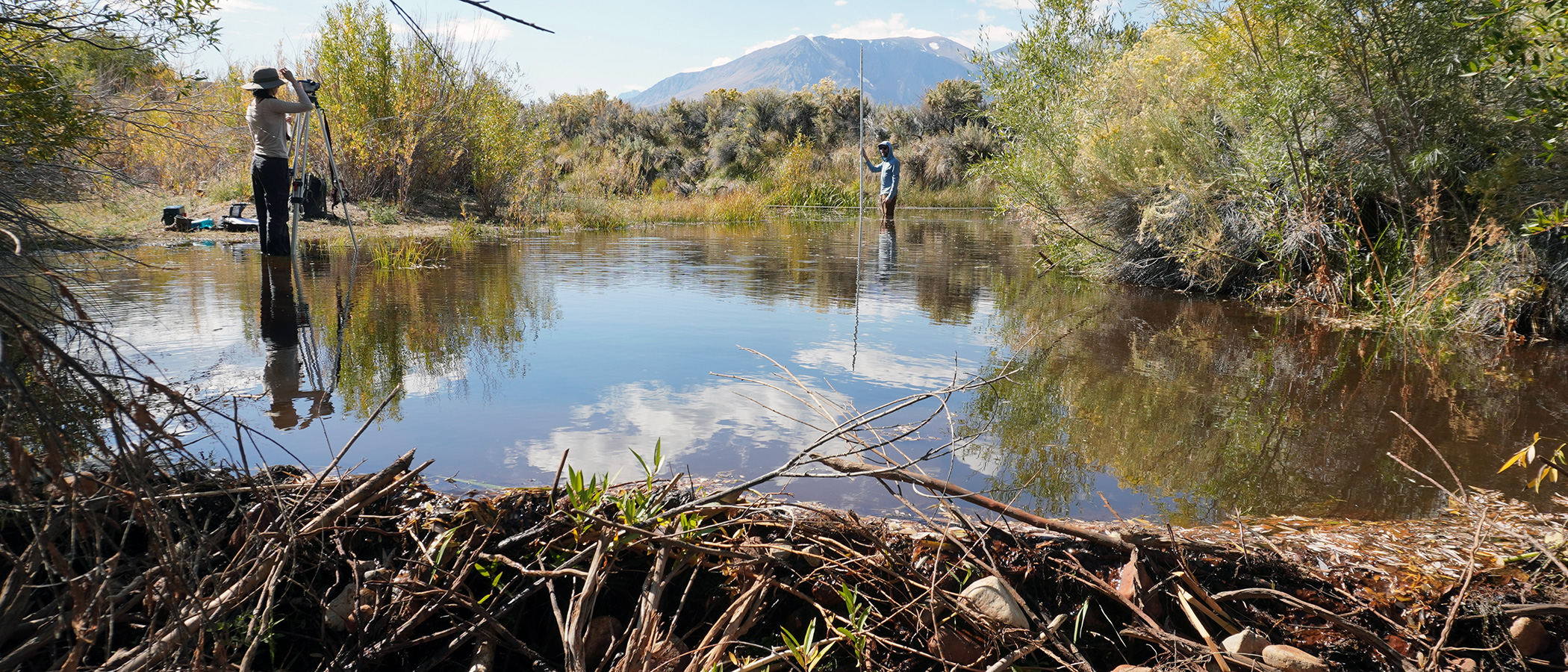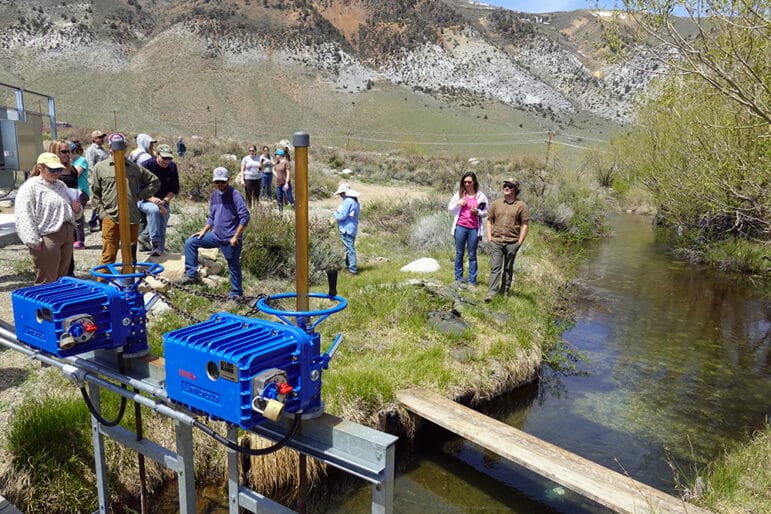
The long-awaited California State Water Resources Control Board hearing expected to occur in 2025 will be a critical moment for reviewing the significant environmental issues tied to the Los Angeles Department of Water & Power’s (DWP) water exports in the Mono Basin. However, as the Mono Lake Committee prepares for that hearing, another important environmental review process is occurring simultaneously. There are three Mono Basin hydropower projects currently under review, and though their effects are very different from the issues associated with DWP’s water exports, they have important long-term implications for stream health.
Mono Lake’s three largest tributary streams—Rush, Lee Vining, and Mill creeks—are invaluable ecological and recreational resources. Flowing from alpine and subalpine headwaters through mixed conifer and pinyon-juniper woodlands to create expansive riparian and meadow habitats in their bottomlands and deltas at the shores of Mono Lake, these streams serve as desert oases that sustain a rich diversity of mammals, birds, fish, reptiles, amphibians, and insects. Each creek also has hydropower projects owned and operated by Southern California Edison (SCE) and all three projects are undergoing federal hydro relicensing.
This once-in-a-generation opportunity, occurring every 30 to 50 years, gives interested parties a process for addressing impacts caused by hydropower operations. The Committee is involved in the relicensing processes for all three creeks—encouraging SCE to adjust operations in specific ways that reduce environmental impacts, support ecosystem health in restoration areas, maintain public recreation, and improve data sharing.

Participating meaningfully in these hydro relicensing processes requires a major investment of time and effort. Each relicensing process spans five to seven years, during which time SCE develops technical materials, engages interested parties on key issues, and solicits feedback on studies and proposed operations. This information is then submitted to the Federal Energy Regulatory Commission (FERC), which produces an environmental report in compliance with the National Environmental Policy Act. FERC uses this process to decide the terms for renewing each project license and has the ability to impose operational requirements if there are clearly documented benefits.
For parties like the Committee, this process entails attending regular meetings, reviewing detailed technical documents, and submitting formal comment letters to FERC within tight deadlines. With three relicensing processes simultaneously underway, the undertaking is significant.
While the environmental impacts of SCE’s hydropower operations on the creeks may be more incremental and less immediately apparent than the effects of DWP’s water exports, they still require careful attention. Hydropower operations alter streamflow patterns—changing the timing and magnitude of flows—in ways that can disrupt aquatic habitats and harm riparian ecosystems. Fish populations, aquatic insect productivity, water quality, and riparian vegetation are just some of the resources affected by irregular and unnatural flows. Identifying the key periods when these impacts are most significant is critical for finding a balance between hydropower production and ecosystem health.
Fortunately, the Committee is not working alone. Agencies, including the Inyo National Forest, California Department of Fish & Wildlife, and the State Water Board have been active and invaluable partners, engaging in agency priority issues, which are often Committee priorities as well. With strong participation from these agencies, each entity can focus on specific areas of concern, while collectively ensuring that a wide range of issues are addressed with depth and precision.
While DWP is often central to conversations about protecting the Mono Basin, the current hydro relicensing process is a reminder that there are other policies and regulatory processes shaping the region’s future. No matter the issue, the Committee remains committed to identifying and mitigating environmental impacts, advocating for changes that balance ecological resources with other needs, and ensuring the long-term health of the Mono Basin for future generations. Simply put, the Committee is on the job, making sure opportunities to advocate for the Mono Basin are not missed.
This post was also published as an article in the Winter & Spring 2025 Mono Lake Newsletter. Top photo courtesy of Stephanie Herrera.
